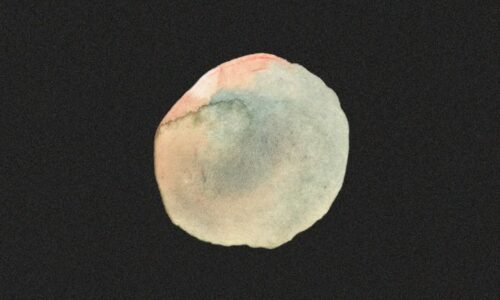29 April 2018
Anno was many things: an immersive intermingling of sound and sight, old and new, electronic and acoustic; but at its heart it was a collection of personal responses to music – some of the most famous and popular music ever written, in fact: Vivaldi’s Four Seasons. Though this particular response required the extended efforts of a rising composer and visual artist, days of rehearsal by twelve world-class musicians, and a horde of screens, computers, cables and amps, it showed the value of creative responses to music, whatever the scale or means. This is why we, in the week of Anno’s Scottish premieres, delivered a series of workshops in four primary schools across Glasgow, visiting Shawlands, Jordanhill, Scotstoun, and Swinton Primary Schools to get their pupils thinking about how listening to music doesn’t just need to be an end in itself, but can also be the beginning of something new.
Eleanor Meredith, the visual artist behind the gorgeous birds, flowers, cranes and colours that swept over the audience during Anno, led these workshops, exploring different ways to visually respond to music. Starting from excerpts of Vivaldi and her sister Anna Meredith’s new compositions, she used watercolour paints, coloured paper, and stop-motion photography to help the kids create pictures and short films of the feelings this music gave them.
But first she helped them identify these feelings. It’s a considerable skill to listen to music (especially when you’re six and a group of strangers have just brought a load of colourful paint and paper into the room), but it’s another entirely to listen to yourself as you listen, to identify and fix the fleeting impressions, insights, memories and moments that music unfurls in us. In order to get the kids thinking about what the music made them see and feel, Ellie started by asking some general questions. Who can name an instrument in an orchestra? What does an artist do? (‘They paint,’ one girl said, as she eyed-up with a smile the untouched paintbrush on her table). What does a composer do? Ellie asked. This one was more difficult. After a pause of uncertainty from the children, Ellie responded that a composer was an organiser and arranger of ideas – a description that, though it’s most often applied to creators of music, would, in a way, come to suit the children themselves once they had picked up their paintbrushes and scissors and ushered their feelings into a colourful reality.
After this introduction, with slightly more focused minds (though those paints on the desks still looked tempting), we started listening. In a dull Glaswegian November, surrounded by grey skies and browning leaves, we heard the vivid cloudbursts of Vivaldi’s four hundred year old summer storm, the raindrops-on-a-pane-of-glass pizzicato of his winter, soft as white breaths. These were alternated with some of Anna’s new music: the myopic, zygotic stirrings of Anno’s opening in which single string lines emerge, grow, duplicate and separate to form a feeling, moving, grooving whole; and one of the electronic movements that opens with a soothing synthesiser’s sequenced steps, and that, to quote the expert opinion of one of the pupils, ‘sounds a bit like a videogame’.
This listening was followed by more questions. What colours did you see? What shapes? Did the music make you think of another place? The answers were a loud, varicoloured, shapeshifting yes: reds, blues, greens; triangles, squares, circles; running in a forest, visiting a village in India, watching fireworks from the roof of a Spanish hotel. After another listen, the children mixed these colours, collected these shapes, and mapped these places to build up pictures of what the music sounded like for them, still listening as they worked.
Once the washes were dry, the water-pots emptied (only a couple by spills) and the paintbrushes laid down, we had classrooms full of colourful responses: repetitious, vigorous, abstract and personal. And the workshop wasn’t over yet. Splitting into smaller groups, and listening to another excerpt of music, the children then with flashing scissors and careful hands cut coloured shapes that danced and shifted in stop motion movies filmed on the cafeteria floor. Robots came and went, leaves shuffled and scurried, and now the movement the music implied and their paintings desired came to life as film.
A couple of days later, the children visited Tramway during our rehearsals to hear a live performance of the music they had responded to in their classrooms, and to see how Ellie had responded to the same sounds. As the music began, faces lit up with the screens and – as you’ll understand if you saw the show – wows and gasps were let out loud. We exhibited each school’s artworks in another room, where the true variety of the responses became apparent (and in which lots of running about was done, because, duh, it was a big open space).
Anno was many things. It was a project interested in the connections between art forms, and an opportunity to explore their relationship to one another, but it was ultimately an opportunity, as all music is, to reflect and respond: with birds, cranes, forests, fireworks – or just something personal, that something in the back of your mind.
